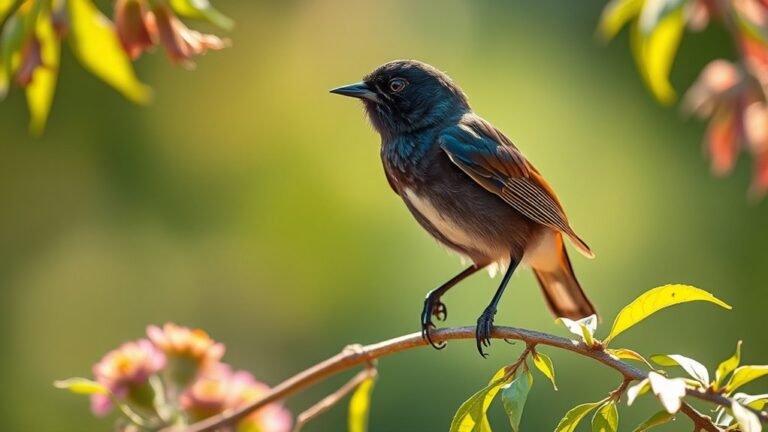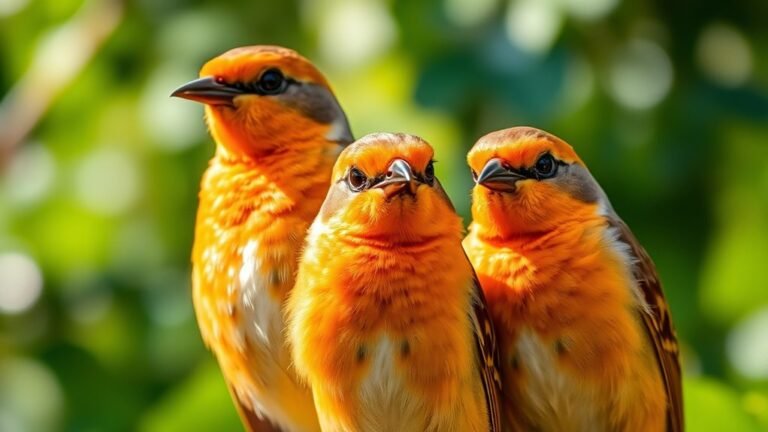Owls Found in Illinois: A Comprehensive Guide
Owls are important to the ecosystems in Illinois. Learning about them can help you appreciate the variety of wildlife around you. There are different types of owls, like the Great Horned Owl and the Eastern Screech Owl. Each type has special skills that help them survive.
For example, some owls hunt at night, using their sharp hearing and excellent vision. They also have different homes, such as forests, fields, and even urban areas. These factors help them live and thrive in many places.
What helps them stay alive in different environments? Let's dive into what makes these amazing birds so interesting!
A Quick Overview
Illinois is home to many types of owls. Each kind of owl lives in different places and plays an important role in nature.
The Great Horned Owl is very easy to spot. It has "horns" on its head and is a strong hunter.
Eastern Screech Owls are small and wake up at night. They are known for their special calls. You can find them in forests and even in neighborhoods.
Barred Owls make a unique hooting sound. They like to nest in thick forests, especially near water.
Learning about these owls helps us understand how they help keep nature in balance in Illinois. Owls are more than just birds; they are key players in our ecosystems.
Overview of Owl Species in Illinois

Illinois is home to many interesting owl species. Each owl likes different habitats and has its own special habits.
The Eastern Screech Owl enjoys living in suburban areas. It makes its nest in tree holes. This owl is quiet and sneaky when it hunts.
On the other hand, the Barn Owl prefers open fields and farms. It has great hearing to help it find prey in the grass.
The Great Horned Owl is another type that can live in many places, like forests and wetlands. Its loud calls help it claim its territory.
Great Horned Owl

The Great Horned Owl is one of the most interesting birds in Illinois. This owl is known for its big, fluffy "horns" and strong body. It can live in many places like forests, fields, and even cities.
You can often find them sitting high in trees or on buildings, looking around their area.
Great Horned Owls eat a variety of animals. They mostly hunt small mammals like rabbits and mice, but they also catch birds and sometimes reptiles. With their sharp talons and great hearing, they're skilled hunters.
These owls help keep nature in balance. Learning about their habits makes us appreciate them even more in our beautiful Illinois landscapes.
Eastern Screech Owl

The Eastern Screech Owl is a small bird that lives in Illinois. Despite its size, it's an interesting part of nature here. This owl can adapt to many places, like forests, parks, and even neighborhoods.
These owls like to nest in tree holes or artificial boxes. If you listen closely, you might hear their special calls. They make sounds that can be a soft trill or a spooky whistle, especially at dusk.
The Eastern Screech Owl mainly hunts for small animals and insects. It has great night vision that helps it see well in the dark. Its feathers can be red or gray, which helps it blend in with its surroundings.
Watching these owls is a fun way to connect with nature and learn about the local environment. They're an important part of our ecosystem!
Barred Owl
As you walk through Illinois' woodlands and wetlands, you might spot the Barred Owl. This bird stands out for its unique hooting call. Barred Owls love living in thick forests, especially ones close to water. They like to nest and rest in tall trees, both deciduous and coniferous.
Barred Owls are mostly active at night. They've great night vision, which helps them hunt for small animals, birds, and even reptiles. You may hear them calling out with their famous "who cooks for you" hoots.
Knowing these traits about Barred Owls makes it easier to appreciate their importance in Illinois' ecosystems and helps you feel more connected to nature.
Barn Owl
In many rural areas of Illinois, you might see the Barn Owl. This bird has a heart-shaped face and bright white feathers underneath. Barn Owls like open spaces, such as farms, grasslands, and old barns, where they can hunt for food.
When it's time to nest, Barn Owls often use old buildings or tree cavities. They lay between 2 and 18 eggs. The female sits on the eggs, while the male goes out to find food. This teamwork helps them care for their young.
Barn Owls are known for their great hearing. They fly quietly at night, which helps them catch their meals.
Watching these owls can make you appreciate the balance of nature in rural areas.
Long-eared Owl
If you walk through the woods or open fields in Illinois, you might see a Long-eared Owl. This bird stands out because of its ear-like tufts. It likes to live in places with thick trees near open areas, where it can hunt easily.
You can watch them looking for small animals at dawn or dusk. They've great hearing, which helps them find their food.
The sounds they make are interesting too. If you listen closely, you might hear their soft, low hoots. These calls can sound both spooky and beautiful.
Learning about where they live and how they sound can help you appreciate these amazing birds more. Seeing them in their natural habitat makes you feel more connected to the wildlife in Illinois.
Northern Saw-whet Owl
The Northern Saw-whet Owl is a small bird that many people in Illinois love to watch. Its unique features and spooky calls make it stand out.
These owls like to live in thick forests, especially those with pine trees, which are perfect for their homes.
They come out mostly at night and hunt for small animals and bugs in the dark. You can hear their special "toot" calls in the evening. These calls help them talk to each other and mark their territory.
It's important to protect their homes and understand how they fit into nature. The number of Northern Saw-whet Owls can show us how healthy the local environment is.
Watching these amazing owls can help you enjoy and appreciate nature even more!
Frequently Asked Questions
What Is the Best Time to Spot Owls in Illinois?
To spot owls in Illinois, the best times to look are at dusk and dawn. This is especially true in the winter months. During these times, owls are more active and easier to see. Understanding when they like to be out helps you find these amazing birds in their natural homes. Remember, being quiet and patient can also help you catch a glimpse of them. Happy owl watching!
Are Owls Endangered or Protected in Illinois?
Owls are not endangered in Illinois. However, they are protected by laws that help keep them safe. These protections help make sure that owl populations stay strong. Getting involved in owl conservation is a great way to help. It also helps us feel responsible and connected to our community.
How Can I Attract Owls to My Yard?
To attract owls to your yard, you need to make it a great place for them to live. Start by planting native trees. These trees can help owls find a safe place to nest. You should also put up some perches where they can sit and look for food.
Keep your yard dark at night. Owls prefer low light so they can see better in the dark. Lastly, make sure there are plenty of food sources nearby, like small rodents or insects. By doing these things, you'll have a better chance of seeing owls visiting your yard. They are amazing birds, and with the right setup, they might just call your yard home!
What Do Owls Eat in Illinois?
Owls in Illinois eat small animals like mice, birds, and insects. They have a variety of food choices. If you want to attract owls to your yard, consider providing a home that offers these types of food. This will help create a welcoming space for them. Watching owls can be a fun and exciting experience!
What Sounds Do Owls Make at Night?
At night, owls make many different sounds. You might hear hoots, screeches, and whistles. Each sound means something different. For example, a hoot might mean an owl is calling to a friend, while a screech can sound more alarmed.
Listening to these calls is fun! It helps you learn about owls and how they live in their environment. Understanding their sounds makes watching owls even more exciting. So next time you hear an owl at night, pay attention to its calls! You might just discover something new about these fascinating birds.

Luna is the passionate founder and author of Birds and You, a website dedicated to sharing her love for birds with fellow enthusiasts. Through her engaging articles and guides, she aims to educate and inspire others to explore the fascinating world of birds. When she’s not writing, you can find Luna observing birds in their natural habitats or sharing beautiful bird photography on Pinterest. Join her on this journey to celebrate and protect our feathered friends!







